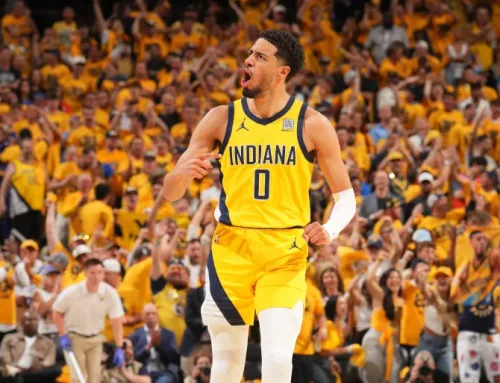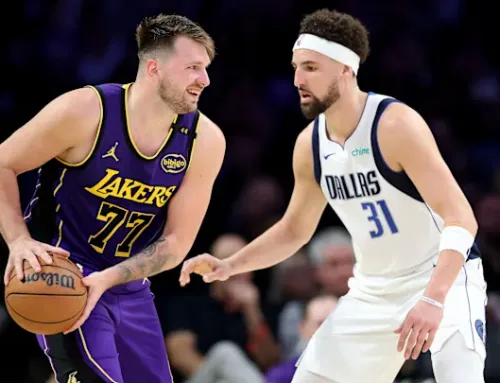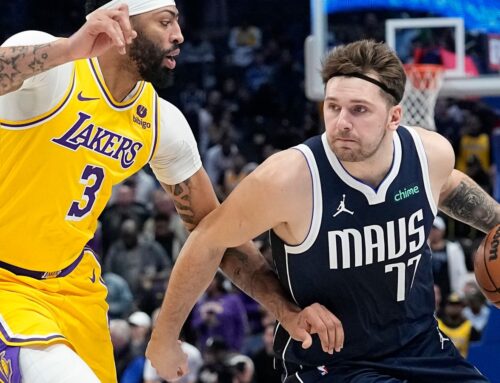Warriors Secret Shuffle Amid Their Scuffle
By: Avi Tyagi
The Warriors have been slumping for a while now. Since their outstanding Christmas Day victory over the Suns, they have a Cleaning the Glass + 0.8 net rating to accompany their 22-23 record. They were the standout juggernaut before that, with their top-ranked defense and a 27-6 record despite two contests where their entire starting lineup rested. There are 3 main reasons for the change in form since then. Let’s start with the biggest one.
INJURY: it needs to be all caps. Maybe we should even make a flashing neon sign for it. Draymond sat a few matches after that Christmas game, their play declined, and after further consideration, Draymond then made an extended visit to the spectator seats. He returned, only for Steph to get hurt soon after. It’s hard to understate how important those 2 are to the Warriors. During Draymond’s absence, the most apparent change was the quality of rim protection. Before Boxing Day, the Dubs were allowing a league-best 23.1 shots per game within 5 feet of the hoop. Opponents were only converting on those chances 61.7% of the time, a rate in the top half of the league. During Dray’s time off, the Dubs allowed 27.2 shots at the rim, the biggest jump among any teams in the sample. Opponents shot an astounding 66.7% in that zone (2nd worst in that stretch to only the Rockets). The other two notable shifts during that time span: a decrease of 2 team-wide assists per game, and a decrease of 1 block. Team-wide assist totals rarely shift drastically, unless a team is reliant on a single premier passer to run its offense. The Warriors are reliant on 2 such options. I’m not even sure I need to give any data on this team’s effectiveness without Steph on the court. I’ll just throw in one little factoid: The team has a +10.1 net rating with Steph on the court, and a -2.3 net rating with him off. That’s enough. That being said, there are some other reasons too.
Starting Lineup Shakeups: When Klay’s return became immediately impending, the Warriors proactively chose to move Poole to the bench. They thought he was probably their 5th or 6th best player by playoff time and he should likely get adjusted to that role. His minutes per game fell from 30 to 25. His defensive intensity suffered during that time span, as did that of most Warriors without Dray to communicate and captain the operation. In reality, all that did was diminish the impact of the Warriors second-best self-creator. Since then, Poole’s only improved. 3 seasons in a row, Poole has shown massive improvements in his game post all-star break. If most improved player could cover a 3-season time span, he could easily be the clear winner. As a rookie, he displayed almost no physical advantages, with the physicality of the pro level often proving too much to handle. Even his 3 wasn’t falling (29%) and his 80% free throw shooting was the one positive indicator he had. He had a 45% true shooting percentage, worst of any of the high-minute rookies and worst in the league that season. It was 11% worse than league average. Now, we’re looking at a 61% TS for Poole, driven by continual physical development and continued changes to his offensive and defensive approach. This time, it’s a further development as a pull-up shooter and driver as his opportunities have increased. He’s become undeniable, as their second best overall offensive player. Without Steph, his ascendance has shown even brighter in a stark contrast to most of the lineup. Wiggins has fit in perfectly as a point-of-attack primary defender around Steph who can focus on attacking closeouts, rather than being maligned for a lack of self-creation, passing, or a consistently frequent driver as he often previously was. Payton and Looney are defensive substitutes who orbit around Steph’s gravity, eager to screen and cut as needed. Most of their surrounding players fit that mold in some respect. Even the rookies have learned to only attack certain lopsided matchups late in the shot clock, sometimes to a fault. Without Steph, the only players capable of the classic dribble-pass-shoot checklist are Klay and Poole. Asking that as a primary duty of Klay currently is too much to ask. Poole has thrived in that spotlight. Since March began, he’s averaging over 25 points per game a game on 65% true shooting, including a streak of 16 consecutive games of 20+ points, and that’s despite some quibbles with shot selection still persisting. An uptick in primary initiator responsibilities has actually been a boon to increasing his effectiveness by introducing more opportunities for him to onrush the paint. He’s now producing 7 drive points a game, scorching the nets with a 63% efficiency on that play type. And that might not even be the most impressive part of his game during this recent stretch. He’s somehow scoring 8.5 points per game on pull-ups at an absurd 46% mark. The Poole Party hype train has been picking up steam since the preseason began and his 27% usage rate during the minutes Steph sat provided an indicator. Now he’s a proper 28%-usage player and that might not even deserve to change with Steph back. Finding ways to incorporate Steph and Poole together as the sole primaries of the offense will be the most difficult challenge, considering the many mouths to feed.
Shot Selection: This team has always been notorious for their ability to turn WHY??? shot attempts into Why Not. It’s not quite working at the moment. In bringing back Klay, the team has encouraged him to shoot a lot. The concern is the overall shot selection and efficiency. As much as Klay should use the regular season to rediscover his form and get more comfortable with a slowly increasing minutes load, that probably will not suffice in the playoffs. It might be too hard to win a playoff series with an offensive player commanding a 28% usage rate but with only a 53% true shooting percentage. Either the shooting has to return as he finds his form, or more than likely, some of the shot selection choices will have to change. There is one shot type in particular that needs to change: the turnaround jump shot. Regardless of whether or not he begins shooting the lights out, those turnarounds are probably not the right allocation of shot attempts within a fully functioning version of the Warriors offense. Many of those are off-balance, one-legged fadeaways, and (per NBA.com) Klay is shooting 33% on almost 2 fadeaway attempts per game. Those don’t even include the 9 on-balance turnaround attempts, of which he has only made 1. The good news: most of those have come during offensive possessions without Steph or Poole on the court. When Steph returns, those will likely vanish. Regardless, it’s probably not a good shot. A lot of the rest of his shooting percentage may be attributable to a slight change in mechanics, variance, and a more difficult shot profile. Klay’s release is quicker than it used to be as a requisite change to produce more shots with less space creation capability right now. That change also makes his shot more variable. There are far more shots now where he’s not being able to get his legs and core strength comfortably into a shot, resulting in an extended outward kick and an off-balance miss. Those are to be expected right now and very understandable. That added variability, alongside some variance on open 3s, allows shooting percentages to fluctuate further now that 51% of Klay’s shots are 3s (an uptick from 41%). Most of that change has come from an uptick in above the break 3s, which now comprise 41% of his shots compared to 33% previously. Those are likely tougher shots to take at the moment. Overall, if the fadeaways are removed, and with more of a free-flowing offense with Steph, Poole, and Draymond on the floor, Klay might have enough space to generate cleaner easier looks. That might provide a major boost to his shooting percentages and to their overall offense.
With Steph back, they will have the option to stagger Poole and Steph as needed. It might be wisest to have either of those two either be the first option on the play or to be Draymond or Iguodala’s first option to pass to. Speaking of which, both of them came back recently, and instantly cleaned up many of the offensive and defensive mistakes that were occurring previously. Both are excellent passers, but their handling is best utilized in transition or on certain designated sets meant for a floor spacer, a cutter, or a star. All their recent games against quality opponents have shown the reasons why. Without Steph on the court, when Poole sits, the offense collapses. Draymond has incredible passing vision, but a lot of his actions are based capitalizing on smaller passing windows to teammates on the same page. Additionally, defenders sag off of him more than almost ever, ready to grant him a runway to the lane for a below-the-rim layup. That cuts off many cutters and introduces more defenders to read his cues and jump his passing lanes. Draymond currently has a 32% assist rate, which is great. However, all those factors also mean Draymond has a 32% turnover rate, in the 1st percentile league-wide. That’s not good. Additionally, that is exacerbated by the fact that they only have 4 players capable of producing drives against quality defenders, Steph, Klay, Poole, and Wiggins. Moody, Lee, and Draymond can exploit easier matchups, off-balance defenders, or slight openings to create openings. Against quality defenders, those quickly vanish and all 3 are reticent to press their advantage further. Kuminga can attack once he’s picked up steam going downhill but quality defensive teams like the Grizzlies are often quick to stifle him early on his drives or to send him to the line. It’s not a surprise that his highest scoring averages have come against the Bulls forward defenders, the Lakers, and the Trailblazers. Many teams choose to foul him on his runways and his 68% free throw shooting makes that a very viable option. He also makes the most mistakes of anyone in the rotation and thus might require the most patience to play within a playoff series. In their recent stretch, they’ve also been extremely foul prone. In the month of March, the Warriors have committed the 3rd most fouls per game, better than only the inexperienced Pistons and Trailblazers. And in 4th quarters, they’ve still committed the 3rd most fouls per game, above only the Pistons and Knicks. For an experienced team, that has to change in the playoffs.
With all that out of the way, where does that leave the Warriors playoff chances? What might be their optimal playoff rotation look? Here might be what a possible version of that looks like:
All The Time: Steph 38 minutes, Dray 36, Poole 34, Klay 32, Wiggins 32
Primary Bench Minutes: Payton 20, Looney 16, Porter 16, Iguodala 10
Secondary Options (minute totals might increase depending on series, injury, foul trouble etc.): Kuminga 3, Bjelica 2, Moody 1
That rotation encompasses their 9 best players at the moment. Lineups would likely be staggered to ensure that only 2 of their 4 defensive oriented personnel (Dray, Andre, Payton, and Looney) would be on the floor during any stretch so as to optimize spacing. That is far different from their setup during much of their recent 8-16 slide. They just need their five best players fully healthy, a tough ask but an especially important one for this team. We’ve already seen what the roster looks like in those circumstances. The Klay, Steph, and Poole 3-guard lineup with Wiggins has a +72 net rating in 63 minutes, and that’s without Draymond. Despite less room for error than previously perceived, the Warriors still appear to have the makings of a contender.




